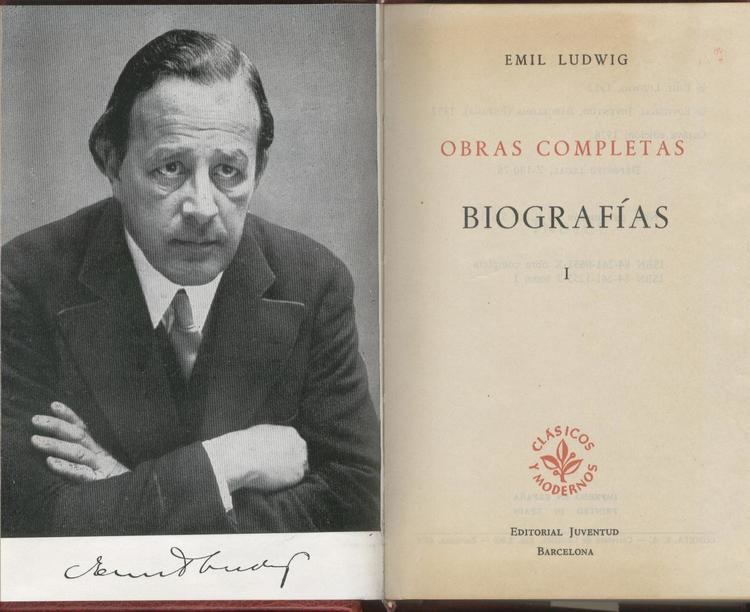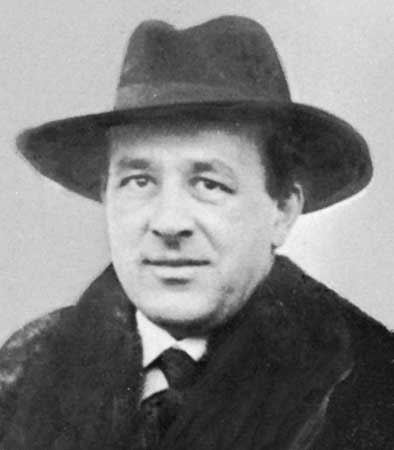Full Name Emil Cohn Occupation Writer, journalist Name Emil Ludwig Spouse Elga Wolff (m. 1906–1948) Movies Hitler's Madman | Nationality German and Swiss Known for Writing biographies Role Author Education University of Wroclaw | |
 | ||
Books Napoleon, The Nile, The Son of Man: The Story of J, Bismarck: The Story of a Fighter, The Germans: Double H Similar People Jean Anthelme Brillat‑Savarin, Albrecht Joseph, Edna St Vincent Millay, Douglas Sirk, Reinhard Heydrich | ||
The Nile "The Life Story of a River"By Emil Ludwig Part2
Emil Ludwig (25 January 1881 – 17 September 1948) was a German-Swiss author, known for his biographies and study of historical "greats."
Contents
- The Nile The Life Story of a RiverBy Emil Ludwig Part2
- The nile the life story of a river by emil ludwig
- Biography
- French and English editions of works by Ludwig
- References

The nile the life story of a river by emil ludwig
Biography

Emil Ludwig (originally named Emil Cohn) was born in Breslau, now part of Poland. Born into a Jewish family, he was raised as a non-Jew but was not baptized. “Many persons have become Jews since Hitler," he said. "I have been a Jew since the murder of Walther Rathenau [in 1922], from which date I have emphasized that I am a Jew.” Ludwig studied law but chose writing as a career. At first he wrote plays and novellas, also working as a journalist. In 1906, he moved to Switzerland, but, during World War I, he worked as a foreign correspondent for the Berliner Tageblatt in Vienna and Istanbul. He became a Swiss citizen in 1932, later emigrating to the United States in 1940.

At the end of the Second World War, he went to Germany as a journalist, and it is to him that we owe the retrieving of Goethe's and Schiller's coffins, which had disappeared from Weimar in 1943/44. He returned to Switzerland after the war and died in 1948, in Moscia, near Ascona. In 1944, Ludwig wrote a letter to the New York Times where he urged that "Hitler’s fanaticism against the Jews could be exploited by the Allies. The Three Powers should send a proclamation to the German people through leaflets and to the German Government through neutral countries; threatening that further murdering of Jews would involve terrible retaliation after victory. This would drive a wedge into the already existing dissension of the generals and the Nazis, and also between ultra-Nazis and other Germans.”
During the 1920s, he achieved international fame for his popular biographies which combined historical fact and fiction with psychological analysis. After his biography of Goethe was published in 1920, he wrote several similar biographies, including one about Bismarck (1922–24) and another about Jesus (1928). As Ludwig's biographies were popular outside of Germany and were widely translated, he was one of the fortunate emigres who had an income while living in the United States. His writings were considered particularly dangerous by Goebbels, who mentioned him in his journal.
Ludwig interviewed Benito Mussolini and on 1 December 1929 Mustafa Kemal Ataturk. His interview with the founder of the Republic of Turkey appeared in Wiener Freie Presse in March 1930, addressing issues of religion and music. He also interviewed Joseph Stalin in Moscow on 13 December 1931. An excerpt from this interview is included in Stalin's book on Lenin. Ludwig describes this interview in his biography of Stalin. What was originally an omitted section of the interview by Stalin himself, Professor of Montclair State University Grover Furr had finally published an English version of it.
Ludwig's extended interviews with T.G. Masaryk, founder and longtime president of Czechoslovakia, appeared as Defender of Democracy in 1936.
French and English editions of works by Ludwig
The following French editions of Emil Ludwig's books were published in the period 1926–1940: Biographies: Goethe (3 volumes), Napoleon, Bismarck, Trois Titans, Lincoln, Le Fils de l'Homme, Le Nil (2 volumes). Political works: Guillaume II, Juillet 1914, Versailles, Hindenburg, Roosevelt, Barbares et Musiciens, La Conquete morale de l'Allemagne, Entretiens avec Mussolini, La Nouvelle Sainte-Alliance.
Biographies of Goethe, Napoleon, Bismarck and Wilhelm Hohenzollern are available in English from G. P. Putnam's Sons (New York and London).
Emil Ludwig was – and remains – renowned for a popular biography of Napoleon published in English in 1926, just after it was published in Germany in the original German, while Ludwig was still living there. This book is still quite readable today – Ludwig has a rare gift of evoking a vanished era in straightforward plain prose. The book has a rare quality of immediacy, as if what Ludwig writes of were almost current history. Napoleon was published by a New York publishing house renowned for titles of intellectual and scholarly interest in its day, Boni & Liveright.
